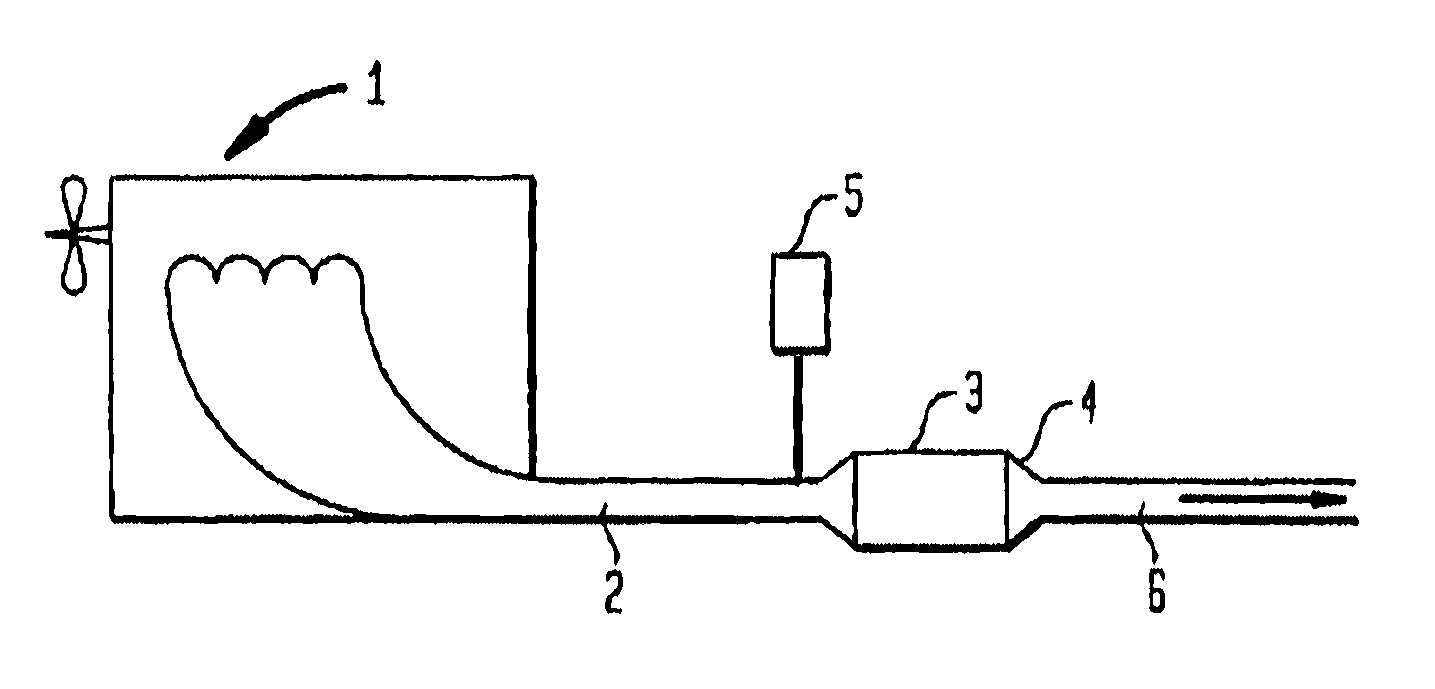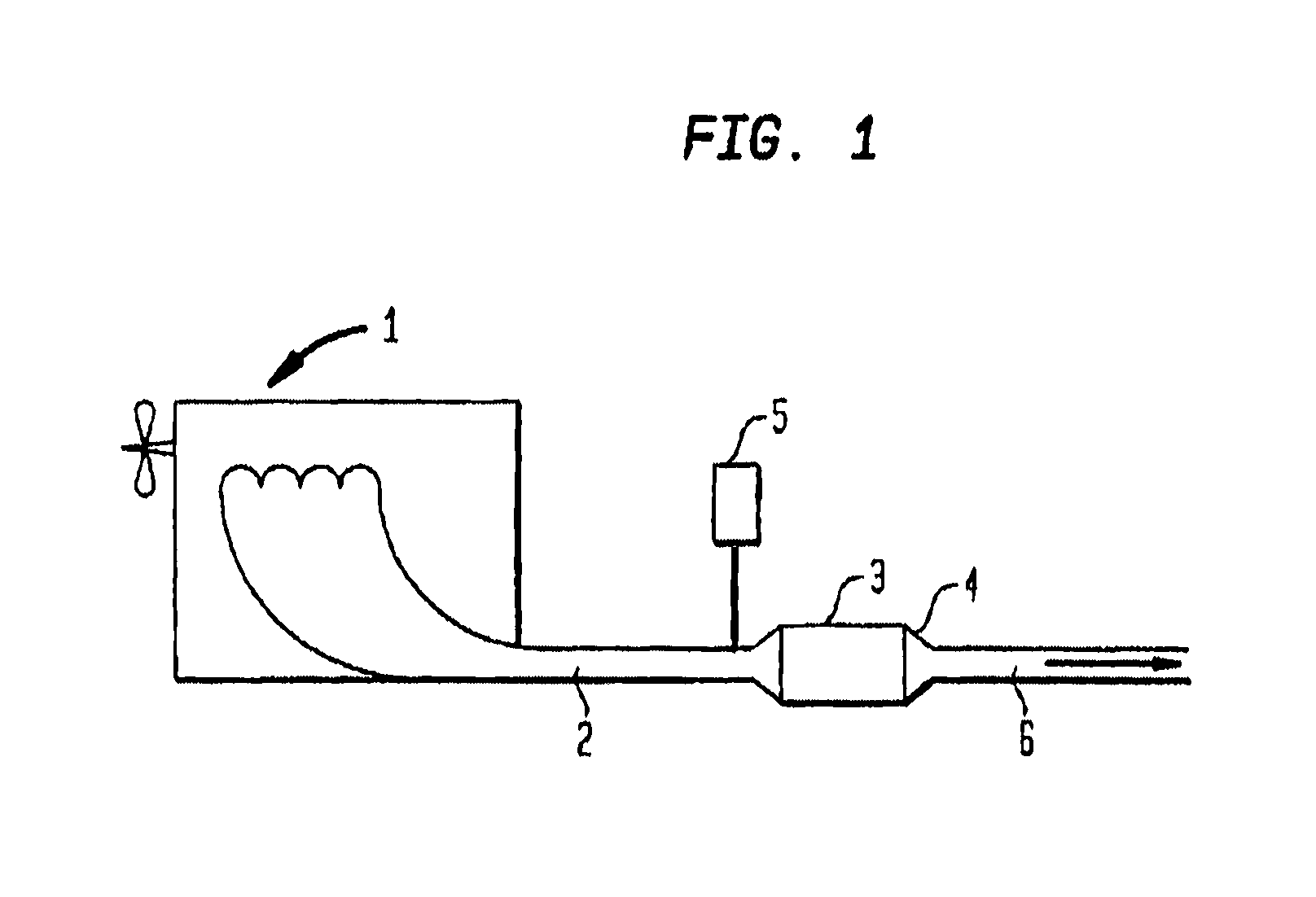Selective catalytic reduction wall flow filter incoporating a vanadate
- Summary
- Abstract
- Description
- Claims
- Application Information
AI Technical Summary
Benefits of technology
Problems solved by technology
Method used
Image
Examples
example 1
[0061]A mixture of dry materials including organic reagents, iron vanadate (FeVO4), TiO2, WO3, and binders were charged into a kneading vessel in amounts according to Table 1.
TABLE 1ComponentMass (g)TiO22208.32WO3245.37FeVO4115.94Bentonite Clay100.00Kaolin91.93Precipitated Silica42.00Hydroxyethyl Cellulose36.00Polyethylene oxide30.00
[0062]While mixing at a constant temperature of 29° C. and maintaining the contents of the vessel at a pH from about 4.0 to 8.0, water was added until the moisture content of the aqueous mixture was approximately 20%. Upon reaching the specified moisture content, about 240 grams of 4.5 mm e-glass fibers having a 6 μm diameter were charged into the vessel. After addition of the glass fibers, additional water and about 15 grams of a plastifier was added until the moisture content of the composition was about 24%. The composition was kneaded until the composition was suitable for extrusion.
example 2
[0063]A mixture of dry materials including organic reagents, ammonium metavanadate (AMV), FeVO4, TiO2, WO3, and binders were charged into a kneading vessel in amounts according to Table 2.
TABLE 2ComponentMass (g)TiO22231.25WO3247.92FeVO446.88AMV32.69Bentonite Clay104.33Kaolin95.91Precipitated Silica45.90Hydroxyethyl Cellulose36.00Polyethylene oxide30.00
[0064]While mixing at a constant temperature of 29° C. and maintaining the contents of the vessel at a pH from about 8.9, water and 150 grams of ammonia was added until the moisture content of the aqueous mixture was approximately 23.4%. About 25.8 grams of monoethanolamine (MEA) was also added to assist with the solubilizing of the AMV. Upon reaching the appropriate moisture content, about 245 grams of 4.5 mm e-glass fibers having a 6 μm diameter were charged into the vessel. After addition of the glass fibers, additional water, 12 grams of lactic acid, and about 18 grams of a plastifier was added until the moisture content of the co...
example 3
[0066]A mixture of dry materials including iron vanadate (FeVO4), TiO2, WO3, and binder was combined in amounts according to Table 3.
TABLE 3ComponentMass (g)TiO21435.5WO3159.5FeVO4107.0Colloidal Silica975.0
[0067]The dry materials were combined with 1885 g of water in a vessel and the pH of the aqueous mixture was adjusted to about 7.5 using an ammonia solution. The viscosity of the mixture was also adjusted by adding xanthan gum. Additional water was added, such that the final percent solids of the mixture was about 35% and the final xanthan gum content of the mixture was 0.3%. The resulting mixture was suitable for use as a washcoat.
PUM
| Property | Measurement | Unit |
|---|---|---|
| Structure | aaaaa | aaaaa |
Abstract
Description
Claims
Application Information
 Login to View More
Login to View More - R&D
- Intellectual Property
- Life Sciences
- Materials
- Tech Scout
- Unparalleled Data Quality
- Higher Quality Content
- 60% Fewer Hallucinations
Browse by: Latest US Patents, China's latest patents, Technical Efficacy Thesaurus, Application Domain, Technology Topic, Popular Technical Reports.
© 2025 PatSnap. All rights reserved.Legal|Privacy policy|Modern Slavery Act Transparency Statement|Sitemap|About US| Contact US: help@patsnap.com


